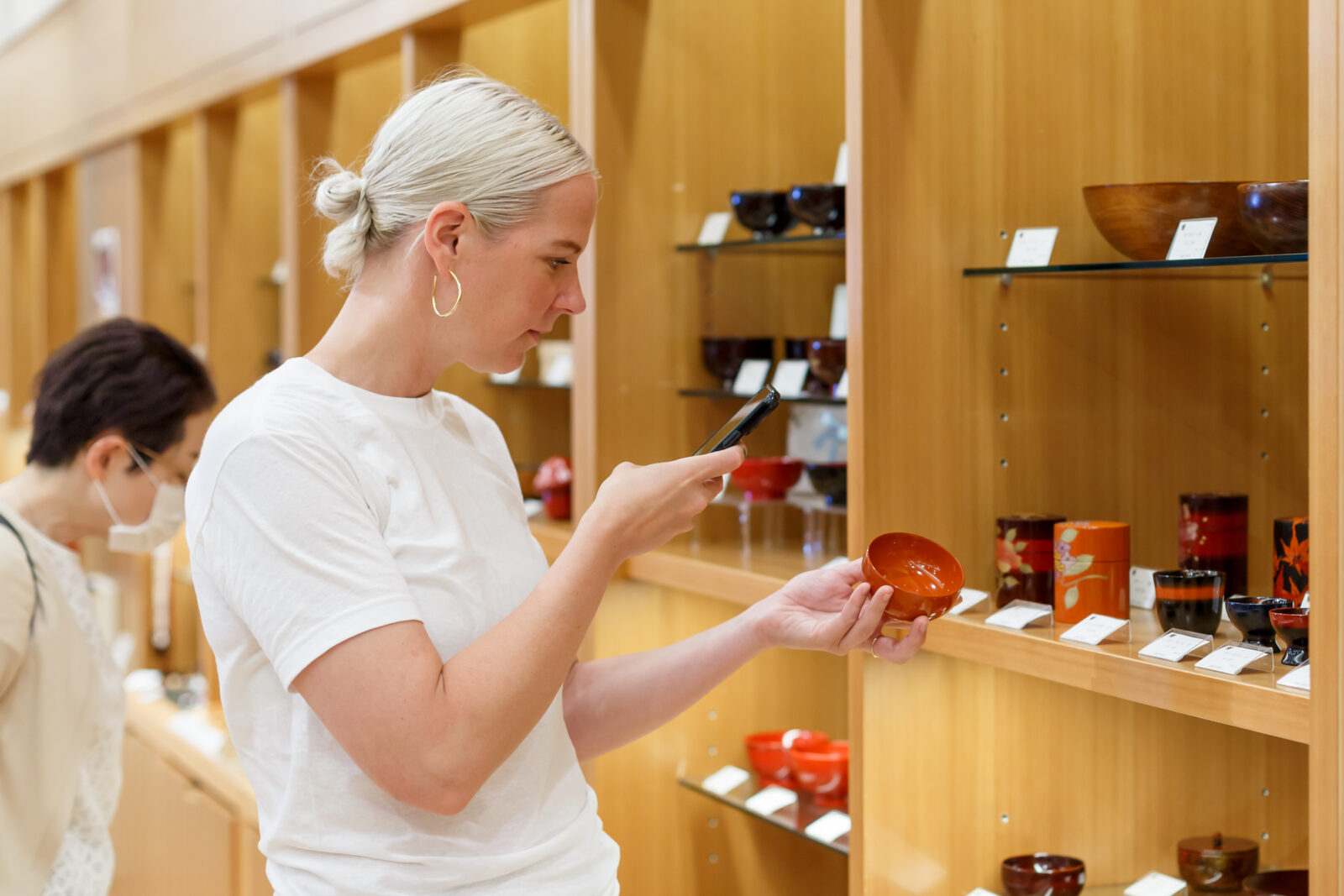- What inspired you to collaborate with the traditional Japanese craft of Kawatsura Shikki, and what aspects of this ancient art form resonate with your own design philosophy?
I am always interested in and inspired by production processes. Ancient processes are even more fascinating to me as they have survived the test of time. The Kawatsura Shikki process not only is a means to create products, but it’s also the way in which an entire region has been set up. Geographically and socially. This is something we have completely lost with modern industrialised processes; the link to nature and community. As with any process or materiality I work with, I always strive to push the limits and to highlight the essence of what makes that material effect so unique. I love diving into this unknown world and discovering which parts I could really push and play with, in order to bring a fresh perspective to the ancient technique.
- How did you integrate your contemporary design approach with the traditional techniques of Kawatsura Shikki during this collaboration?
The Kawatsura Shikki process is one that takes time and patience and highly skilled craftsmen. The materiality of the finished lacquered surfaces is so luscious and glossy and deeply opaque. It’s very different actually to the materials I’m most experienced and used to working with; glass and cast resins which always have an element of transparency which I play with in order to create interesting lighting effects. Understanding that transparency is not something I could work with, I started to analyse what lighting effects I could achieve with the material properties available. I quickly came to the understanding that bouncing light off the surface was a very beautiful interaction. Curves and soft-cornered surfaces really aided in this effect so as opposed to my resin designs which normally have sharp corners to let the light pass through these slightly more transparent areas. I worked with rounded volumes to let both the natural surrounding light and integrated light source curve and bend on the reflection of those surfaces.
- What were the major challenges or surprises you encountered while merging modern design concepts with the age-old practices of Kawatsura Shikki?
I think time is the major challenge. It’s not a process where quick experimentation can happen. It requires a more thought through and planned process. Each layer takes a week to dry and each surface requires many many layers until it’s finished. It makes it a less adaptable process so I had to be really sure of my decisions from the beginning, understanding that last minute changes are not part of this process. I think it also taught me to surrender to the fact that once a decision was made, it was final – which Is actually quite liberating! 
- In what ways do you envision the fusion of your design aesthetic with the craftsmanship of Kawatsura Shikki influencing the future of both contemporary design and traditional Japanese craftsmanship?
I love to work on projects that surprise me, projects that offer a new perspective on both my practice and materiality. I think this collaboration and the results are quite unexpected and I can’t wait to showcase them. Making new connections like these bring our cultures closer together and also pave the way for other collaborations within Japan, which I am eager to explore. There are so many other amazing crafts there and I’m so curious to see the results of the other designers utilising those. This project has made my world a lot bigger – being used to always working with production VERY close to home; either in my own workshop or in and around my hometown. I hope the project brings more visibility to these amazing crafts which sadly are slowly disappearing and that it entices other designers to also explore and work with these same processes. There is so much value in them and we cannot let them disappear!
- Do you foresee this project impacting your future works or creative endeavours?
Absolutely. A new materiality and process is like giving a new toolbox to me. The first results are only a snippet of the ideas I have for integrating this beautiful craft into future projects. I’m very excited to keep exploring possibilities and build on the working relationship with Keita Sato san.
- Can you describe the most rewarding or impactful moment you experienced while working on this collaboration, either in terms of personal growth or the creative process itself?
Working with inspiring people is always the most rewarding part of collaborations. There is definitely a language barrier where I don’t speak Japanese and Keita Sato san and his team don’t speak English. But on the second day of my visit, we were without a translator, but had the most lovely day together regardless. His passion for his craft and business is so beautiful and inspiring. Language is almost not necessary as we just made it work through our shared enthusiasm.
